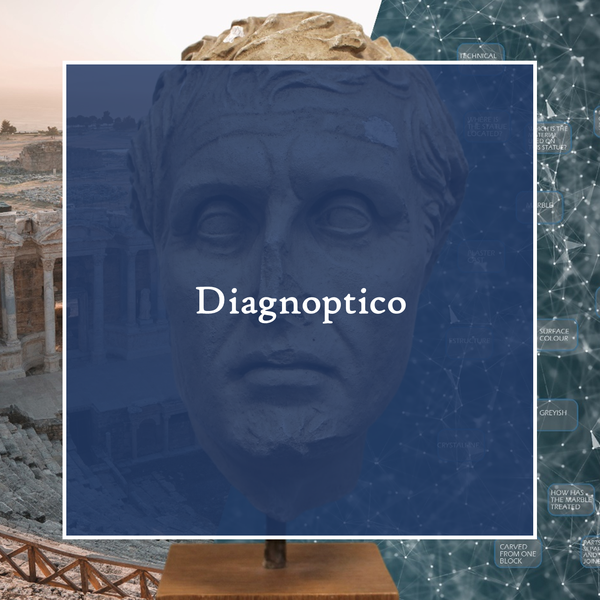Diagnoptico
 |
In this project funded by HessenHub, users can playfully explore archaeological artefacts and their special characteristics in interactive scenarios on a PC or mobile device. Using an object of the Justus Liebig University's Collection of Antiquities, they are gradually introduced to the analysis and interpretation of the objects and their representations. Diagnoptico takes advantage of serious gaming to train archaeological description and analysis skills and is thus at the same time an important element for the study of image science.
The basis of this methodical description, analysis and interpretation of objects is the diagnostic model of the art historian Erwin Panofsky (1892 - 1968), which is essentially based on three questions that build on each other: What is represented? How is it depicted? Why is it depicted in this way? Along these three guiding questions, Diagnoptico first introduces you to the basic properties of the object. Gradually, you delve deeper into archaeological object analysis. Diagnoptico uses interactive, didactic elements, e.g. multiple-choice/response questions, drag-and-drop puzzles, sorting tasks, clozes or crossword puzzles. As part of a course in the winter term 2021/22, students of Classical Archaeology and other disciplines created interactive learning modules. As part of the exhibition opening, visitors will gain insights into the projects and can virtually discover various artefacts. Click here for the interactive scenarios (german). Contact: Dr. Michaela Stark und Dr. Claudia Schmieder |
|
Report on the project "Diagnoptico - Panofsky meets Experience and Interaction Design" on the HessenHub Blog (german). |
|
